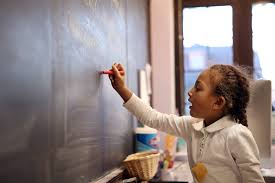Helping your kids learn Spanish at home can be a fun and rewarding experience—even if you’re not fluent in the language yourself. The key is to make Spanish a natural part of your daily life, not just something you do during “school time.” With regular practice and a little creativity, your children can make real progress. Whether your goal is basic understanding or full fluency, these tips will help you get started and stay on track.
Tips for Teaching Spanish to Kids at Home
1. Set Realistic Goals
Before diving in, think about what you want to achieve. Do you want your kids to become fluent speakers, or is your goal simply to introduce them to a new language and culture? Both are great! If fluency is the goal, your daily routine will need to include a lot of listening, speaking, and practice. But even if you can only do a little bit at a time, your kids can still make steady progress.
2. Learn Alongside Your Kids
You don’t have to be fluent to help your kids learn Spanish. What matters most is your willingness to learn with them. When you’re learning together, it becomes a team effort. You’ll both grow your skills, and your kids will feel more confident knowing they’re not alone in the process.
3. Start Early, If You Can
The earlier kids start learning a language, the more time they have to get comfortable with it. Young children pick up sounds and words quickly, especially if they hear them often. But it’s never too late to start—even older kids and teens can do really well with language learning if they stay consistent.
4. Don’t Worry If Your Kids Are Older
While younger kids often absorb language easily, older kids and even adults can still become fluent. Older learners may actually be better at understanding grammar rules and picking up patterns in the language. So don’t give up on fluency just because your child isn’t in preschool anymore.
5. Practice Every Day
Learning Spanish doesn’t have to mean hours of studying. What matters most is using the language regularly. You can do this by:
- Using Spanish words for everyday items (like “agua” for water or “libro” for book)
- Practicing simple conversations, like saying hello and asking how someone is
- Writing a short sentence or two in Spanish each day
- Singing Spanish songs or playing games in Spanish
The more your child hears, says, and writes in Spanish, the better they’ll get.
6. Use Real-Life Spanish
Textbooks are helpful, but real-life Spanish helps your child sound more natural. Try to include things like:
- Books written by Spanish speakers
- TV shows and YouTube videos in Spanish
- Spanish music and songs
- Signs, menus, or labels in Spanish (if you live near Spanish-speaking communities)
Hearing how fluent speakers actually use the language will help your kids get used to pronunciation, rhythm, and real conversation patterns.
7. Connect with Spanish Speakers
If you know anyone who speaks Spanish fluently, try to build a connection. This could be a neighbor, someone from your church, or a tutor. Having someone to talk with and ask questions is super helpful—especially as your kids get better and want to have more complex conversations.
8. Make Spanish Part of Your Daily Life
One of the best things you can do is blend Spanish into your regular routines. Label items around the house in Spanish, play Spanish music while cooking, or use Spanish greetings like “buenos días” (good morning) and “gracias” (thank you). When Spanish feels normal and fun, your kids are more likely to stick with it.
Why Teaching Spanish at Home Is a Great Idea
More Opportunities in the Future
Knowing Spanish can open doors. In many areas, bilingual speakers are in high demand for jobs, ministry, and community service. Even just being able to offer a friendly word in someone’s native language can make a big difference.
Meeting School Requirements
Many schools require foreign language classes for high school graduation. Learning Spanish now can help your kids meet those goals. Plus, it can boost their English skills by helping them better understand grammar and vocabulary.
Learning About Other Cultures
Language is about more than just words—it’s about people. Learning Spanish can help your child understand and appreciate different cultures, customs, and ways of thinking. It can also help them see the world in new and exciting ways.
How You Can Support Your Child’s Spanish Learning
If you’re not fluent in Spanish yourself, that’s totally okay. You can still help your child succeed by:
- Learning with them
- Encouraging daily practice
- Finding fun activities to do in Spanish
- Connecting with Spanish speakers or tutors
- Using helpful apps and books
Fun Tools and Activities to Make Spanish Exciting
Here are some helpful apps and ideas to make Spanish learning feel more like play than study:
Apps for Language Learning
- Memrise – A fast-paced app that helps with vocabulary using short lessons and fun games.
- Duolingo – Great for all ages. It offers quick lessons that include translating, matching, and simple sentence building.
- busuu – More lesson-focused. Students can practice with native speakers and correct each other’s answers.
Other Creative Activities
- MyLanguageExchange.com – A website where your child can safely connect with kids around the world who want to learn English and speak Spanish.
- Cooking Together – Try recipes from Platillos Latinos, a bilingual cookbook. Cook while reading the Spanish version of the instructions for a fun challenge.
- Spanish- English Picture Books – Books like ¡Buenos Días, Carlitos! or El Pato Paco are great for early readers.
- Spanish Bible Materials or Hymns – These can be fun for older learners and help with vocabulary and sentence structure.
Using BJU Press Spanish Curriculum at Home
BJU Press offers Spanish programs for different age groups, and they’re made to be easy to use at home:
For Younger Kids (Grades 1–6)
The Pasaporte al Español program is divided into two kits:
- Kit A for Grades 1–3
- Kit B for Grades 4–6
It uses fun, interactive methods to teach vocabulary and grammar—no long lists of words or boring drills. It helps kids learn by seeing, hearing, and doing.
For Older Kids and High School Students
Spanish 1, 2, and 3 from BJU Press build strong vocabulary and grammar skills. Lessons are grouped by themes (like family, school, or greetings), and video teachers guide your student through each lesson. This is great if you’re not confident in your own Spanish skills.
Even if your middle schooler is ahead of their grade, they can begin the high school curriculum slowly with your help.
Final Thoughts
Teaching your child Spanish at home doesn’t have to be hard or overwhelming. You just need to be consistent, creative, and open to learning together. Whether your kids become fluent or simply get a great start, you’ll be giving them a gift that can open new doors for the rest of their lives.
Let Spanish be a part of your everyday life. Keep it fun, use real conversations, and don’t stress about being perfect. The journey itself is just as important as the destination.





